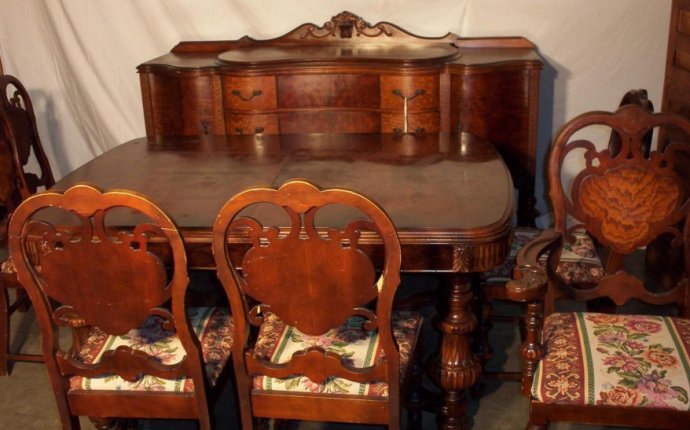
Antique Dining Room Furniture Styles
 A close inspection of saw marks can help you determine a table's age.
A close inspection of saw marks can help you determine a table's age.
If your family has used the same dining room table since you were young, there's a chance that you've been eating your dinner from a priceless antique. The condition and markings on the wood, the style and the hardware used to assemble the table can help determine if it's antique - more than 100 years old - or simply a collectible. Age is just one determinant of value, however. Condition and craftsmanship are equally important.
Style
Assessing the style of a piece of furniture, such as a dining table, can help determine not only its age, but also from which part of the world it originated. Europe has a rich tradition of recognizable styles, from gothic to neo-classical, as does China and America, with its British colonial background. These styles evolved through the years, and if you aren't conversant with them, you can compare features of your table to examples found on antique furniture websites. Even if the style of the table suggests that it's an antique, however, you have to consider other factors. It may be a copy, fabricated years after the style was popular.
Saw Marks
Like styles, sawing techniques have changed through the years, and a close inspection of the unfinished underside of the table should reveal saw marks. If you see the familiar arc cuts of a circular saw, the table was made in the 19th or 20th centuries. Evenly-spaced angular saw marks suggest that the fabricator used a frame saw, common in the 17th and 18th centuries. Very coarse and irregular teeth marks can place the table to the late 16th century, when only basic handsaws were available. Rough-hewn wood suggests even earlier origins.
Hardware
Another way to date a table is to examine the hardware holding it together. Unless your table predates the 18th century, when it was common to assemble tables with wooden pegs, the fabricators probably assembled it with screws. If you can remove one of these screws, an examination of its length and width, as well as the condition of the threads, should give you a good idea of its age. The thinner and more more worn it is, the older it is. To give an accurate assessment, the screw must be an original part of the table. That's most likely if it's covered with finish and is difficult to remove.
Signs of Refinishing
If your table is old, there is a good chance that it has been refinished at least once. Unfortunately, although refinishing improves the table's appearance, it lowers its value. Look for sanding marks, especially in crevices around decorative carving or turnings. Another sign of refinishing is wear-through on a veneered tabletop, especially at the edges. If the top isn't veneered, you may still see signs of sanding on the edges as they will be slightly rounded. It you don't see any sanding marks and you suspect the table is old, look for signs of wear in the finish such as checking, peeling and cracking. Moreover, an original shellac finish on American furniture suggests pre-Civil War origins.









